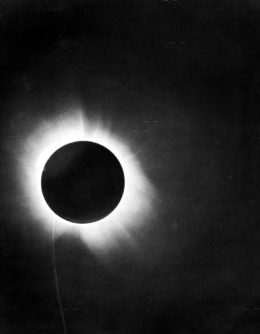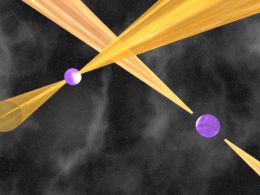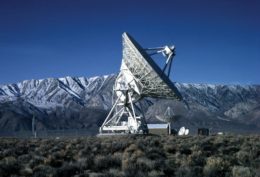Does Einstein’s general theory of relativity stand the test of time, or does this famed description of gravity waver under scrutiny? A team of astronomers has used a pair of ultra-dense stellar remnants to put the theory to the test.

An image of the Sun based on a reproduction of a photographic negative created during Sir Arthur Eddington’s 1919 expedition to verify Einstein’s theory. [Frank Watson Dyson]
New Test of an Old Theory
In 1919, scientists journeyed to Brazil and São Tomé and Príncipe to witness a solar eclipse and measure the subtle bending of starlight caused by the Sun’s mass. This experiment was one of the first of a highly publicized series of tests of the general theory of relativity, which governs the warping of spacetime by matter and energy. The theory has withstood test after test, but that hasn’t stopped astronomers from trying to confound it.
As our understanding of the universe and the tools at our disposal have grown more sophisticated, so too have our tests; now, a team led by Hao Ding (Swinburne University of Technology and ARC Center of Excellence for Gravitational Wave Discovery, Australia) has joined the storied quest to probe the century-old theory of gravitation using a type of object not yet known to the world when Einstein penned the theory in 1915 — pulsars.

An artist’s impression of a pair of pulsars. [Michael Kramer (Jodrell Bank Observatory, University of Manchester)]
Tracking a Binary System
Pulsars are highly magnetized, extremely dense stellar remnants that emit beams of radiation. In rare cases, the two stars in a binary system can both evolve into pulsars; the 1974 discovery of a pulsar in a binary system and its importance as a test bed for theories of gravitation won Russell Hulse and Joseph Taylor a Nobel Prize.
Astronomers use binary pulsars to test the predictions of general relativity by measuring the rate at which their orbits decay as they lose energy in the form of gravitational waves. Past measurements of the orbital decay rate for one of the 16 confirmed pulsar binaries, PSR J1537+1155, disagreed with the predictions of relativity by 9% — a far larger discrepancy than has been found for other systems.
A major difficulty of performing this test lies in determining the distance to PSR J1537+1155, which moves across the sky at an unusually quick pace; unfortunately, the best way to measure the distance to a pair of pulsars uses the predictions of general relativity — so it can’t be used in a test of the theory. Now, Ding and collaborators have determined a new distance to PSR J1537+1155 the old-fashioned way: by measuring the system’s apparent motion relative to background stars as Earth moves around the Sun.
Questing for Precision

One of the 25-meter radio telescopes in Owens Valley, California, which is one of the ten sites that make up the VLBA. [NRAO/AUI/NSF]
With this new measurement, the disagreement between observations and the predictions of relativity shrinks to just 2.3%. Looking to the future, Ding and collaborators anticipate that high-sensitivity very long baseline interferometry measurements will further refine our estimate of the distance to PSR J1537+1155 and potentially resolve the remaining tension between observations and theory.
Citation
“The Orbital-decay Test of General Relativity to the 2% Level with 6 yr VLBA Astrometry of the Double Neutron Star PSR J1537+1155,” Hao Ding et al 2021 ApJL 921 L19. doi:10.3847/2041-8213/ac3091

